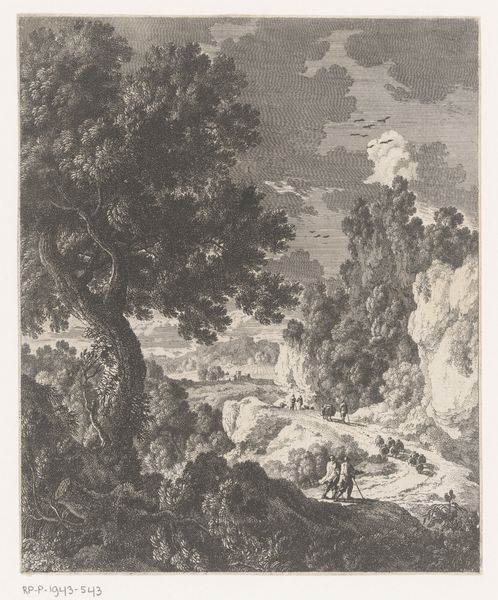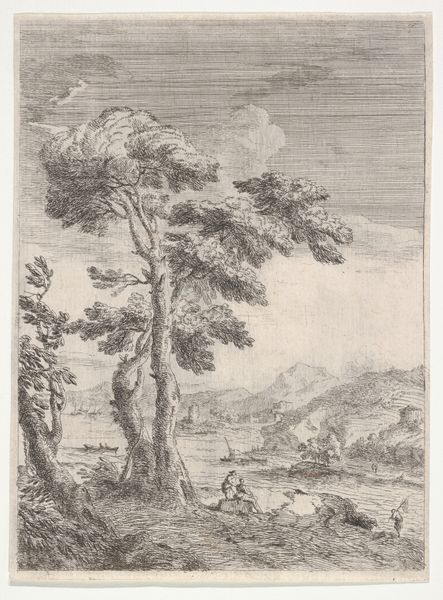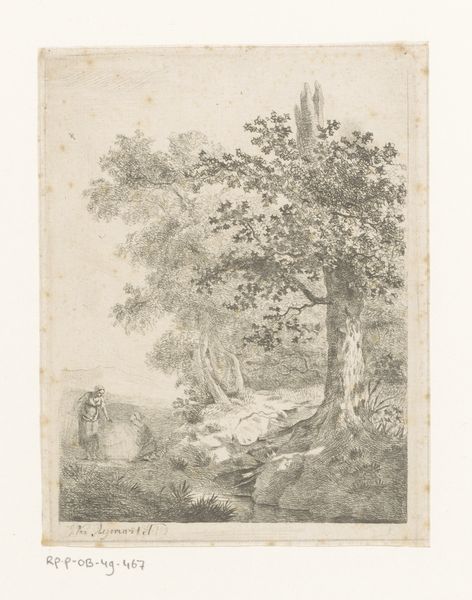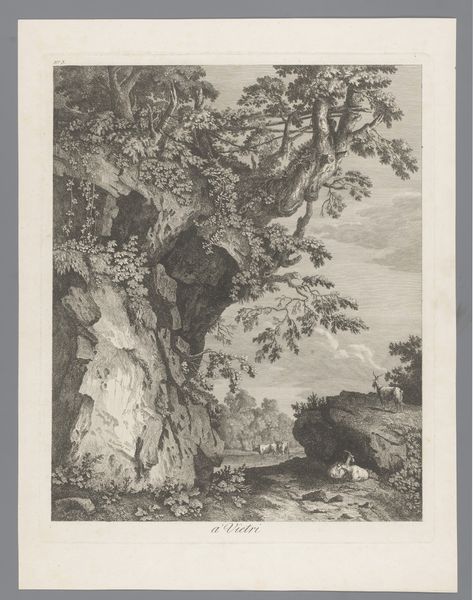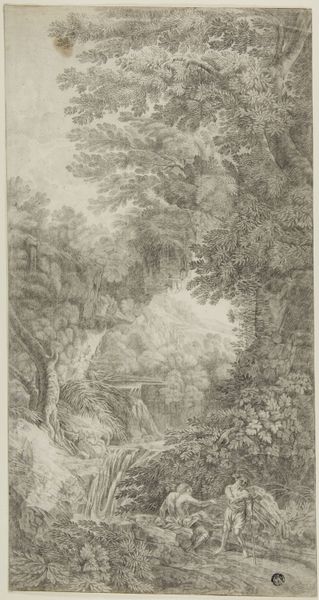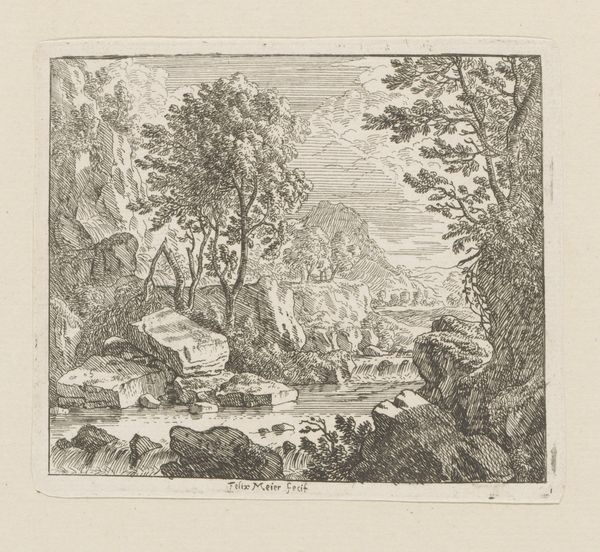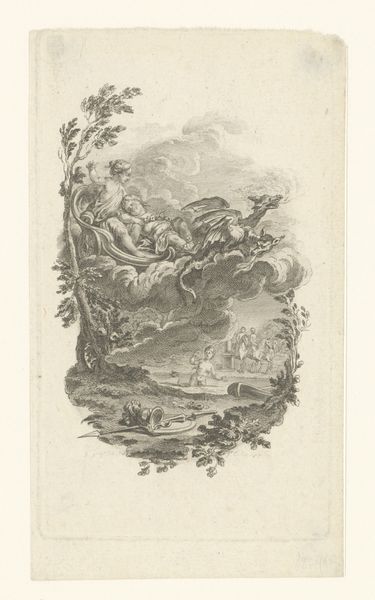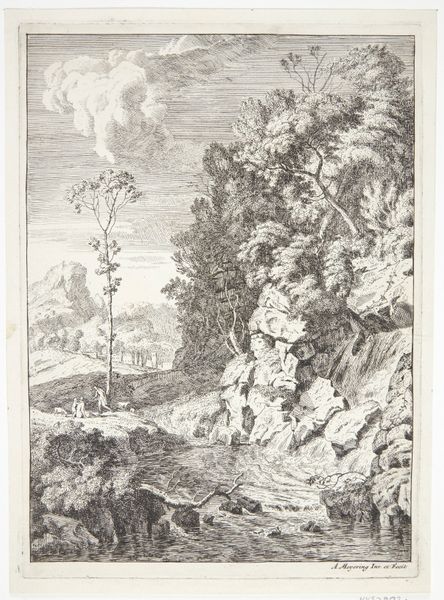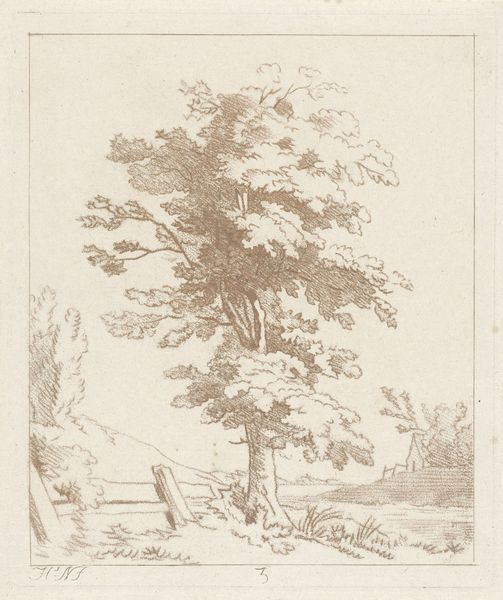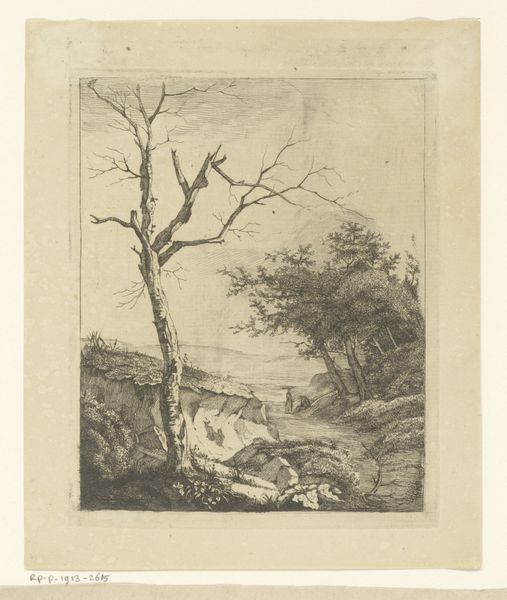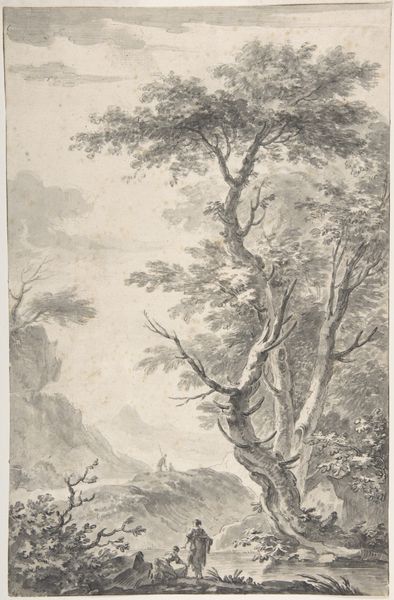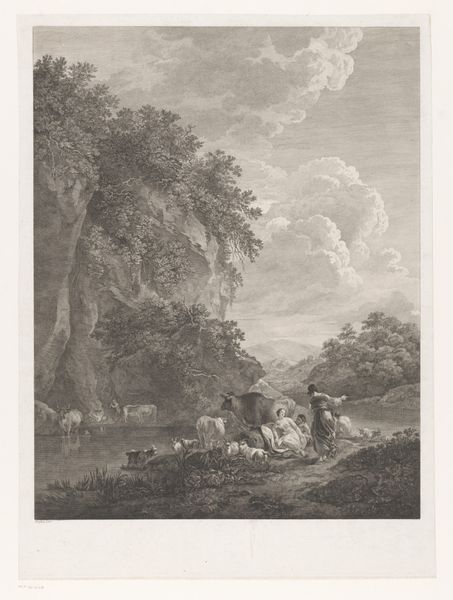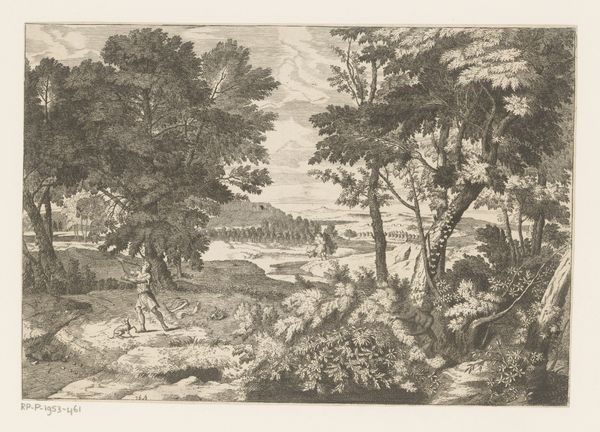
Landschap met Jupiter die Callisto verleidt in de gedaante van Diana Possibly 1774
0:00
0:00
Dimensions: height 268 mm, width 191 mm
Copyright: Rijks Museum: Open Domain
Editor: Here we have "Landscape with Jupiter seducing Callisto in the guise of Diana," a print made around 1774 by Richard Earlom, currently housed at the Rijksmuseum. The sepia tones create a very dreamlike atmosphere, and the contrast between the densely shaded trees and the bright, open landscape beyond is really striking. What do you see in this piece? Curator: The compositional structure relies on a compelling dichotomy. The foreground, dominated by the intricate rendering of the figures and trees, serves as a complex visual field, a semiotic density which then yields to the serene openness of the landscape in the background. This spatial recession leads the eye, constructing a narrative not merely through subject matter, but through structured visual experience. Note also how the tonal range, limited yet nuanced, contributes to a unifying visual language. How does this manipulation of tonal values affect your interpretation? Editor: I guess it adds to that dreamlike quality I mentioned? Because the tonal consistency sort of blurs the boundaries, making it feel like it's all happening in the same…mental space, maybe? It deemphasizes depth, somewhat? Curator: Precisely. The constraint of a narrow tonal palette enhances the flatness, drawing attention to the surface qualities and emphasizing the artifice inherent in representation. The composition and tonal values highlight the engraving's surface qualities rather than aiming for photorealistic depth. What conclusions can we draw about the artist's intent, regarding formal concerns, through this understanding? Editor: Perhaps Earlom was more concerned with showcasing the possibilities and technical mastery of engraving itself? Not just depicting a scene, but also using it to demonstrate formal arrangements. I initially responded to the subject matter and the 'mood' but analysing structure opens new meanings. Curator: Precisely! We've seen how attending to these specific visual properties opens avenues towards interpreting the artwork's core aesthetic values, in ways a surface analysis never could.
Comments
No comments
Be the first to comment and join the conversation on the ultimate creative platform.
